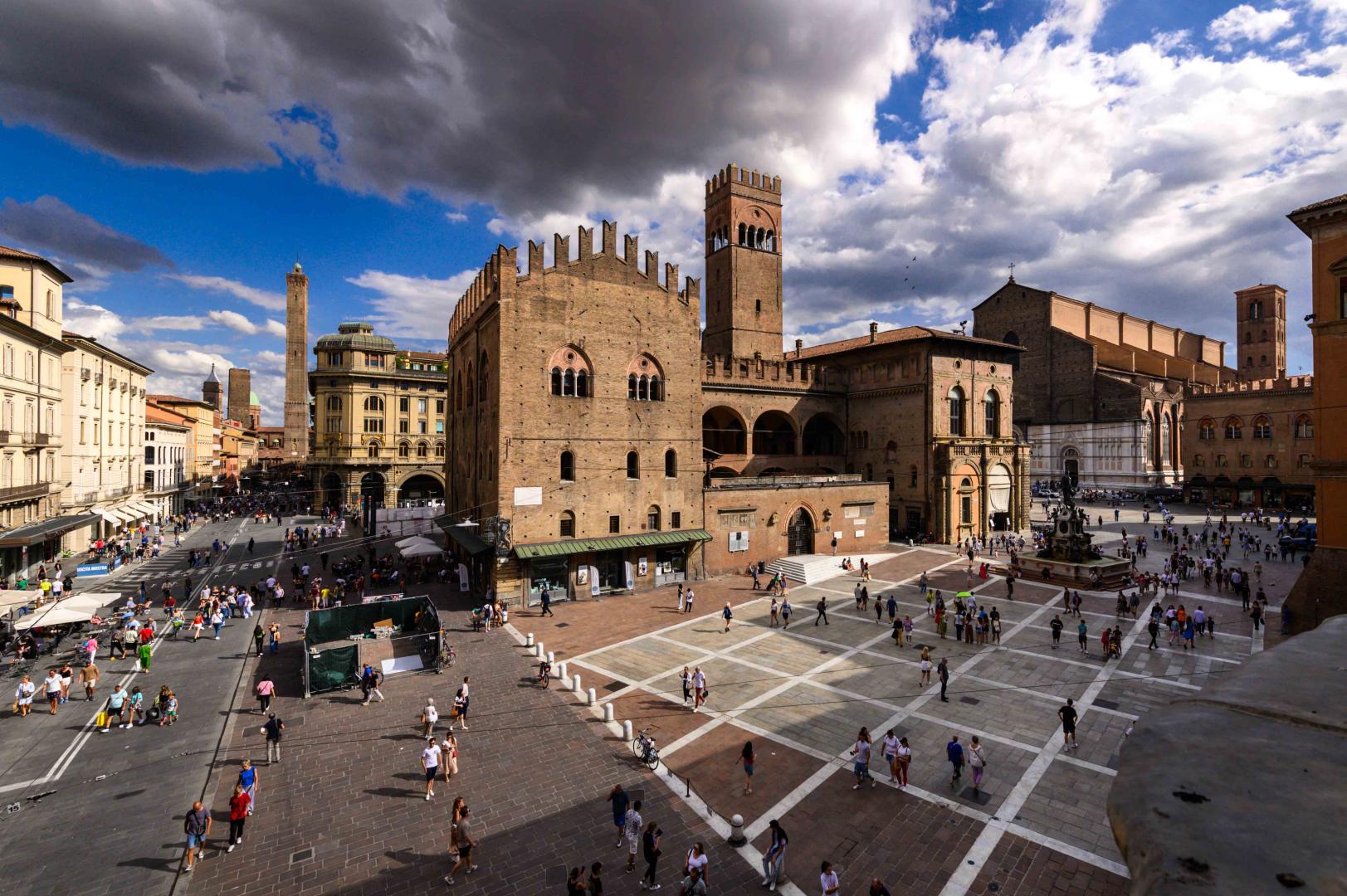The early days
In order to give more space to the city government bodies, land was bought between 1244 and 1246 and the buildings in the areas behind the Palazzo del Podestà demolished: the so-called Palazzo Nuovo was completed; its spaces included the future Palazzo del Capitano del Popolo and Palazzo Re Enzo (the palatium vetus instead stood on the site of the current Palazzo del Podestà).
Initially, the ground floor hosted various shops, the prisons, the Scarania, i.e. the barracks of the Podestà soldiers, and the headquarters of the Massaro, the officer in charge of managing council assets. The People’s Council met here on the first floor (in the current Sala dei Trecento), while the second floor was almost immediately used to house the prisoner, King Enzo, after whom the building was named.
To the north of the Palazzo del Podestà, attached to it but oriented differently are the two civic administration palaces: that of King Enzo with the imposing halls for the legislative activity of the people, and that of the Captain, reserved for the head of the governing organisation and his staff of employees, judges, militants. The block is crossed at the base by a vaulted passage.
The Torre dell'Arengo
Above the intersection of the two arms is the Torre dell'Arengo, an essential means of communication between municipality and citizens, thanks to the 'Campanazzo’, built in 1453. The Tower was erected in 1212, boldly overlooking the intersection of two roads as it does today.
The history of the Palazzo continues...
The extreme dynamism of the Municipality government bodies made the use of these spaces equally dynamic, all the more so when at the end of the 13th century work commenced on the building of Palazzo della Biada, then Palazzo dei Signori and now Town Hall, to which the city’s main magistrates moved.
In the 14th and 15th centuries, the buildings underwent frequent changes, with the internal spaces being adapted to the constantly evolving needs of the institutions. We know, however, that in 1386 Antonio Di Vincenzo was commissioned to consolidate the vaults on the first floor, designated to host the public archive. This function continued until 1878. A few years earlier, on the ground floor near the prisons, a chapel dedicated to the Madonna was built to offer comfort to prisoners.
In the second half of the 16th century, the already rather densely-built area saw the addition of a further construction, the Palazzo della Rota, a new building for new judges.
The top floor later underwent a complete renovation by Gian Giacomo Dotti in 1771.
Rubbiani's restoration reconstructs the Middle Ages
We must then wait until 1905, when Alfonso Rubbiani carried out a radical restoration to return the complex to how it might have been in the Middle Ages. These works were completed in 1913 with the demolishing of the Palazzo della Rota. The empty inner courtyard, the Curia Potestatis, existed once more. During the restoration works, however, Rubbiani realised that there had originally been a wall that closed off the courtyard. He duly restored it.
Other important restoration works to revamp the plant systems and provide a conservative intervention on the façades were executed in the run-up to 2000 during the “Bologna Capital City of Culture” event.
The venue currently hosts cultural events and shows.
Sources
Palazzo Re Enzo: storia e restauri, a cura di Paola Foschi e Francisco Giordano, Bologna, Costa, 2003
https://www.palazzoreenzo.com/il-palazzo
https://www.storiaememoriadibologna.it/palazzo-del-podesta-palazzo-di-re-enzo-3465-luogo
Photo by Giorgio Bianchi

